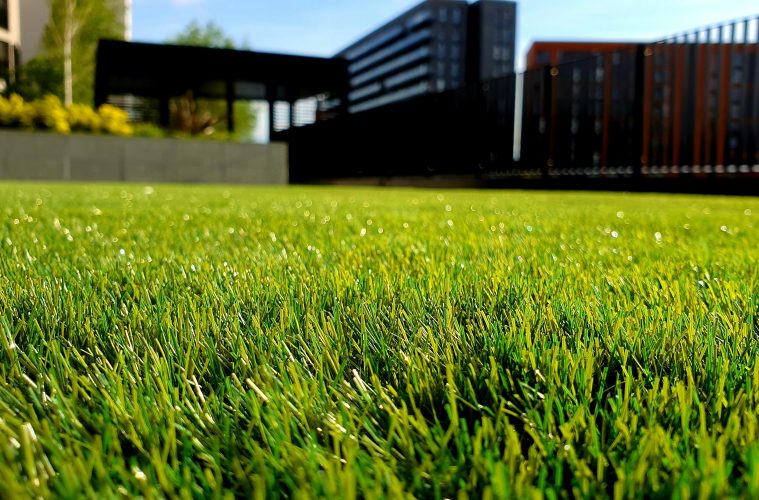A beautiful lawn enhances the visuals of your home and provides a serene environment for relaxation and outdoor activities. Achieving that lush green lawn requires effort, dedication, and knowledge. Whether you are a novice gardener or an experienced landscaper, the principles of lawn care remain the same.
Understanding Your Lawn Type
The first step in maintaining a lush lawn is understanding its type. There are various grass types, each requiring different care practices based on climate and soil conditions. Cool-season grasses thrive in the northern regions, while warm-season grasses are suitable for the southern areas.
Identifying what kind of grass you have can guide your watering, mowing, and fertilizing schedules. Cool-season grasses, such as Kentucky bluegrass, dominate the spring and fall, while varieties like Bermuda grass flourish in the summer heat. Knowing your grass type will help establish precise care routines tailored to its needs.
Ideally, a healthy lawn should be composed of nutrient-rich soil that drains well. Conducting a soil test can help determine pH levels and nutrient deficiencies. Most grasses prefer a pH level between 6.0 and 7.0. You may need to amend your soil to optimize these conditions by incorporating organic matter, compost, or soil conditioners.
Proper Watering Techniques
Watering your lawn effectively is crucial for its health. The best practice is to water less frequently but deeply to encourage strong root development. Aim for about one inch of water per week, which can be achieved through rain or garden hoses. Morning watering is preferable to reduce evaporation loss and prevent fungal diseases.
Monitoring rainfall can help ascertain how much additional watering your lawn may need. Employing efficient methods, including sprinkler systems or even robotic mowers for eco-conscious homeowners, can greatly enhance the watering process, making it more consistent and less wasteful. Consistent care and smart watering habits will lead to a lush, resilient lawn throughout the growing season.
The Importance of Mowing
Mowing is not just a means to an end. It is a fundamental part of lawn maintenance. Frequent cutting encourages thicker grass and prevents weeds from taking hold. The height at which you mow is important as well; generally, keeping grass approximately three inches tall promotes healthy growth and drought resistance.
Sharpening your mower blades will ensure clean cuts, reducing stress on the grass and increasing the health of your lawn. Establishing a scheduled mowing routine will contribute to a consistently lush lawn throughout the growing seasons.
Fertilization Strategies
Fertilizing your lawn can significantly enhance its vibrancy and health. Use a slow-release fertilizer to provide your grass with a constant supply of nutrients. The timing of fertilizer application is important. Fall feeding is critical for cool-season grasses to prepare them for winter stresses.
Applying fertilizers too early in the spring can result in weak growth. Always follow the product’s instructions and take care not to over-fertilize, as this can lead to lawn damage and runoff that harms the surrounding ecosystem.
Pest and Weed Management
Maintaining a healthy lawn involves managing pests and weeds that can impede growth. Implementing an Integrated Pest Management (IPM) strategy can help balance the need for pest control while minimizing chemical usage. Regularly inspecting your lawn for signs of pests or diseases will allow for early intervention.
Encouraging beneficial insects that act as natural pesticides can reduce reliance on chemicals. For weeds, employing pre-emergent herbicides or manual removal during early growth stages can keep your lawn looking pristine.
Seasonal Care Routines
Different seasons warrant varying lawn care techniques to maintain a lush appearance year-round. In the spring, focus on fertilization and aeration to promote growth. Summer care may focus on watering more frequently due to the heat. In the fall, care includes overseeding and preparing the lawn for winter dormancy.
Each season presents unique challenges and opportunities that can be harnessed for optimal lawn maintenance. Knowing the cycle of your lawn will help you take proactive measures to ensure its health and beauty.
Long-Term Lawn Health
Maintaining a lush lawn is an ongoing process that requires attention and care. Establishing a consistent lawn care routine, remaining observant to changes, and adapting your methods as necessary will yield rewarding results. By prioritizing each aspect of lawn maintenance, your outdoor space can flourish and provide enjoyment for years to come.
Achieving and maintaining a lush green lawn is more than just a weekend chore. It’s a long-term commitment that rewards effort with beauty and comfort. By understanding your lawn, employing effective techniques, and being consistent with care, you can create an outdoor oasis that adds significant value to your home.
Published by HOLR Magazine.




